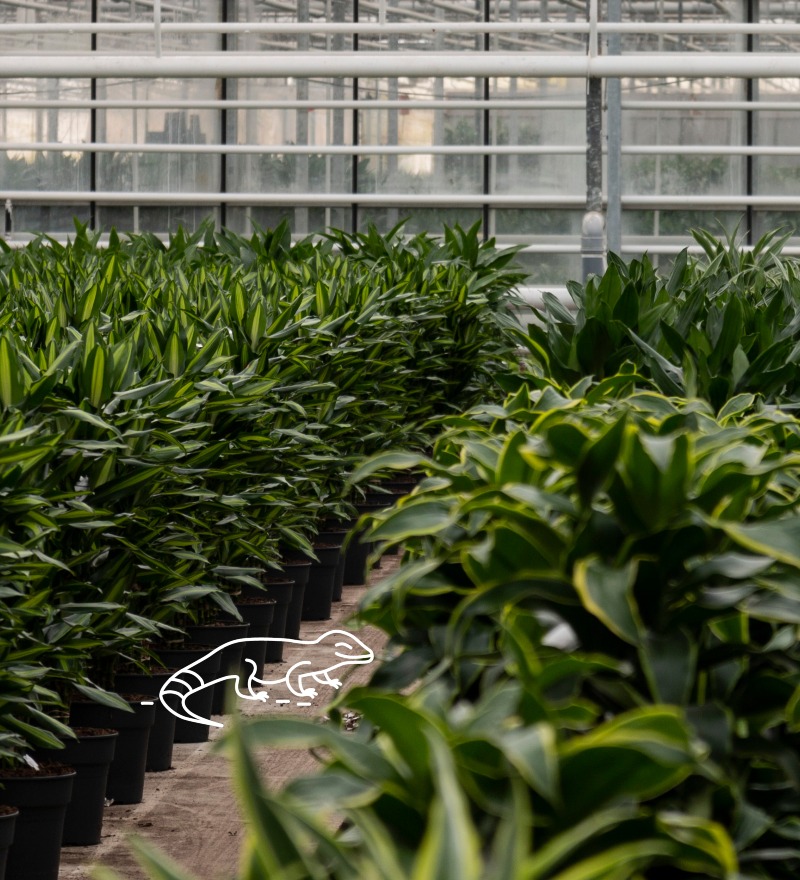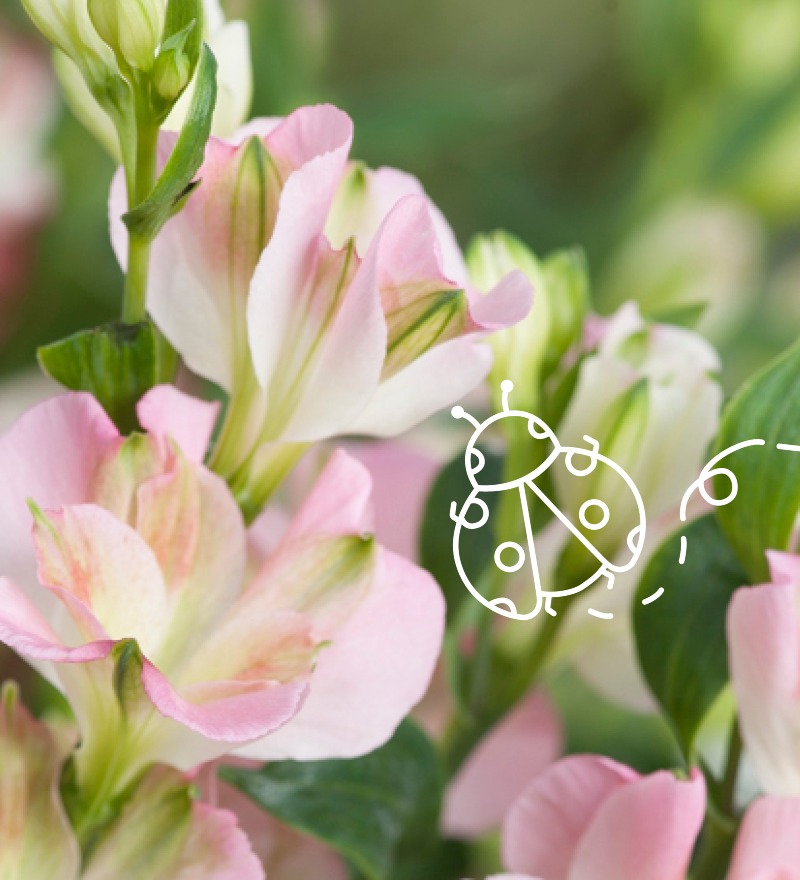Let nature, be nature
Did a ladybird or a parasitic wasp came along with your order? Or maybe even a gecko? You just got lucky!
The plant and its ‘protector’ were just inseparable, two best buds. It is harmless for you and for the plant or flower, simply set it free in nature and it will be forever grateful.
Growers used to use chemical pesticides to combat pests, which is harmful to the environment. Especially nowadays, this is an absolute ‘no go’! In order to find sustainable alternatives, growers are experimenting with natural options. By letting nature take its course and involving natural enemies in the process.
Depending on the pests involved in the cultivation, the natural enemy is chosen: small parasitic wasps, ladybirds, gecko’s and some are even experimenting with quails. By involving them, the aim is that the harmless animals will win. However, a balance is necessary. When there are not enough pests, the natural enemy has not enough nutrition and will leave or die. But when there are too many, some pests will stay on the plant.

But how does this process work? For example, small parasitic wasps go on a hunt for louse and whiteflies, once they find them they will be parasitized with eggs. These eggs will hatch and the little ones will start to look for food as well. This is how the cycle of natural control is established. A small parasitic wasp can clean up 300 louses. However, when there is a plague of louses the ladybird is more effective, they can kill over 5000 louses. Additionally, gecko’s can be used to combat cockroaches and quails to kill larvae.

In this sustainable era, only harmless options should be used. The market and the environment demands that it should no longer be an options, but the standard. However, there is one ‘but’. Using natural solutions could cause some inconvenience. Biological control is never 100% comprehensive, therefor some pests or protectors could come along. But don’t be scared, they are harmless. When we want a natural alternative, these are consequences that cannot be avoided. Every solution has its downside, but choosing the sustainable option is for the greater good. So let nature, be nature.
We are aware that this is something new and it is not always easy to decide which insect is harmful and which isn’t. So for questions contact your account manager and he or she will respond as soon as possible.

